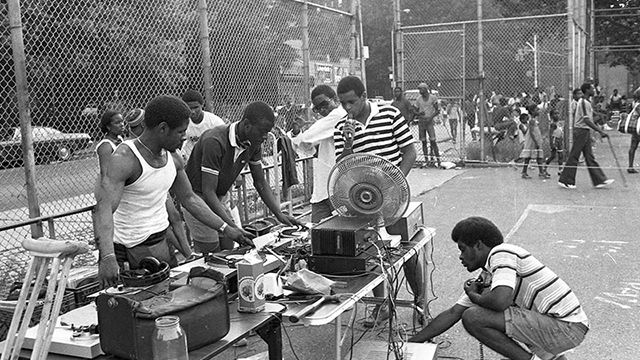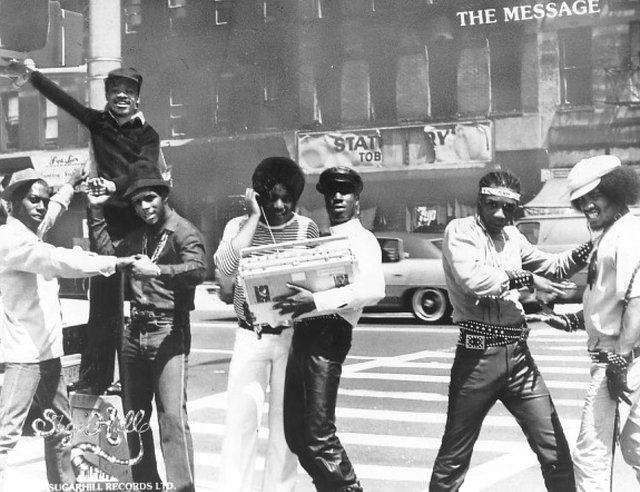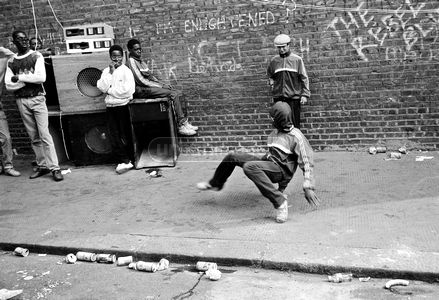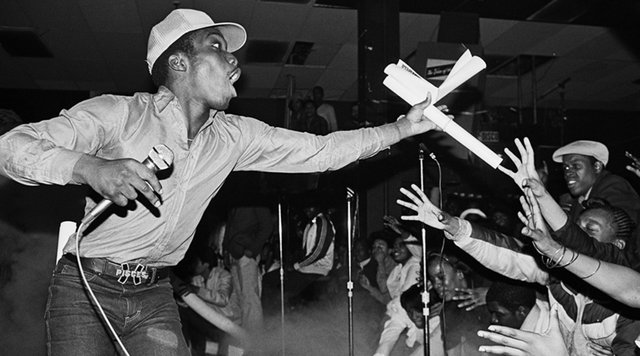the history of Hip hop
Hello today I'm going to tell you about rap.

The beginnings of rap can be found in Herc's observation that the most dancing evenings of funk, which then dominated clubs, house parties and dance-floors, were breaks. In order to ensure a greater success, Herc, who was earning his living thanks to his sound-system, started playing these breaks over and over again. What was to become the essence of rap, the choice, then the making of a powerful and gripping loop was already there, although in a traditional way: at that time (1974-1976) there was no other way, to repeat continuously a passage, than to put two identical records and to pass from one to the other. The technique was improved by a passionate phonographic material enthusiast: Joseph Saddler, better known as Grandmaster Flash. Flash developed what would become known as the DJ-ing. His first solo public trials were not successful, so he teamed up with Robert Keith "Cowboy" Wiggins, the Glover brothers (Melvin "Miss Mel" and Nathaniel "Kidd Creole") to form the Furious 4 and revolutionize music.

Hip-hop was born in 1974 with DJ Kool Herc, and the first raps were made by MC's (Masters of Ceremony) who made simple rhymes to set the mood in the evening. The first rap track itself is not American, it's Italian. It is the title of Adriano Celentano, Prisencolinensinainciusol in 1972, seven years before King Tim III of Fatback Band and Rap-O Clap-O by Joe Bataan (1979). In 1979, a few months later, the first rap hit came out in 45 rpm, it was Rapper's Delight by Sugarhill Gang, whose music was clearly influenced by funk. In 1980 the English punk band The Clash integrated rap into Magnificent Seven.
The 1980s saw the explosion of rap with political groups (such as Public Enemy) or entertainment (such as Run-DMC). In line with the do it yourself of New York punks (hip-hop was first nicknamed the "black punk"), rappers rapped on synthetic and brutal rhythms, coming from cheap drum machines. It is a real popular street music that developed its own themes: on the one hand, under the influence of the Zulu Nation of Afrika Bambaataa, which saw hip-hop as a way of keeping young people away from drugs and gangs and emulating their creativity, and on the other hand as a testimony to a difficult life (hardcore rap). Initially from underprivileged neighbourhoods, rap at its beginnings is often an outlet for the discomfort and demands of the young people who live in them. Violent or raw comments are frequent, willingly provocative. Rap is both a social phenomenon and an artistic form in its own right.

In 1982, The Message from Grandmaster Flash was the revolution announced. This is the first hip-hop hit, a street culture that was then composed mainly of dance and DJ-ing. It is curious that, despite the fact that it is rapper Melle Mel who we hear on the recording, the title is credited with the name of Grand Master Flash (the DJ - sound designer). The rapper didn't have the leading role he has today. American rappers such as Run-DMC criticize white racism in their songs, the majority of listeners are black. The Beastie Boys also began to make a name for themselves, proving and showing that hip-hop culture was indeed a mix of culture and black and white influence. Later on, Puff Daddy copied rap music from the sweet songs that were very popular with whites in the United States.
